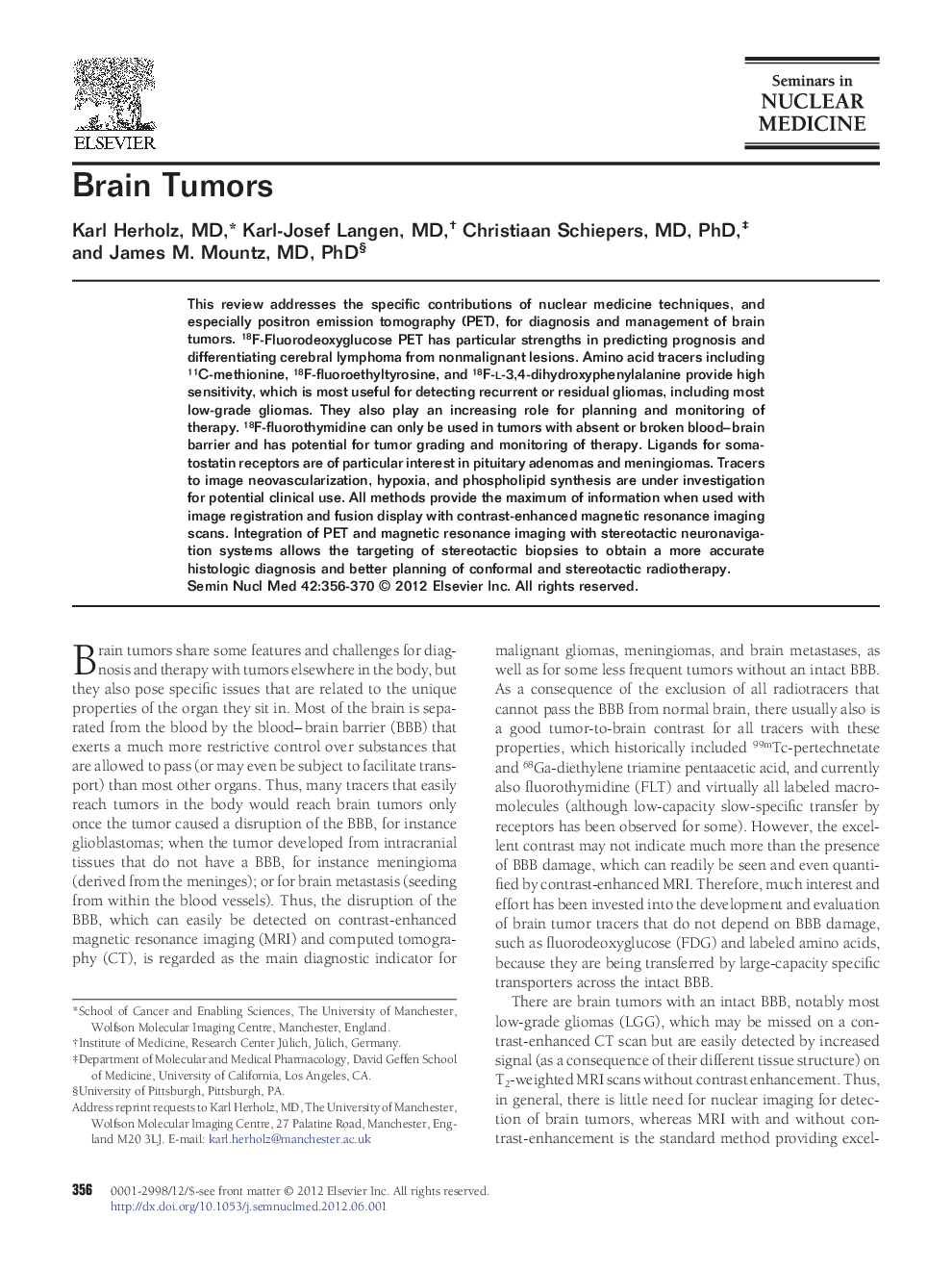| Article ID | Journal | Published Year | Pages | File Type |
|---|---|---|---|---|
| 4251042 | Seminars in Nuclear Medicine | 2012 | 15 Pages |
This review addresses the specific contributions of nuclear medicine techniques, and especially positron emission tomography (PET), for diagnosis and management of brain tumors. 18F-Fluorodeoxyglucose PET has particular strengths in predicting prognosis and differentiating cerebral lymphoma from nonmalignant lesions. Amino acid tracers including 11C-methionine, 18F-fluoroethyltyrosine, and 18F-l-3,4-dihydroxyphenylalanine provide high sensitivity, which is most useful for detecting recurrent or residual gliomas, including most low-grade gliomas. They also play an increasing role for planning and monitoring of therapy. 18F-fluorothymidine can only be used in tumors with absent or broken blood–brain barrier and has potential for tumor grading and monitoring of therapy. Ligands for somatostatin receptors are of particular interest in pituitary adenomas and meningiomas. Tracers to image neovascularization, hypoxia, and phospholipid synthesis are under investigation for potential clinical use. All methods provide the maximum of information when used with image registration and fusion display with contrast-enhanced magnetic resonance imaging scans. Integration of PET and magnetic resonance imaging with stereotactic neuronavigation systems allows the targeting of stereotactic biopsies to obtain a more accurate histologic diagnosis and better planning of conformal and stereotactic radiotherapy.
